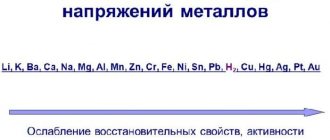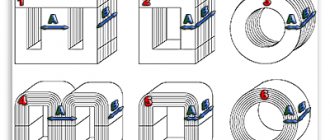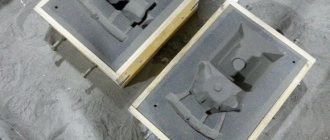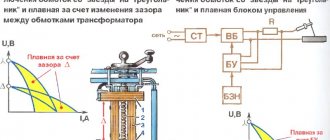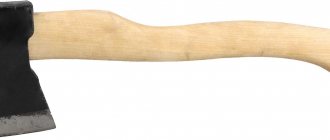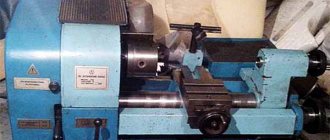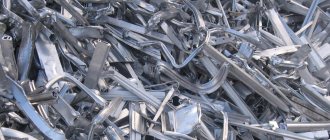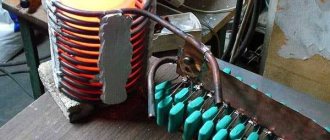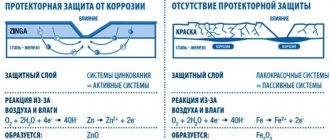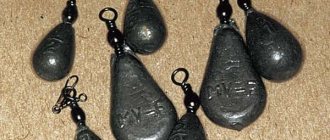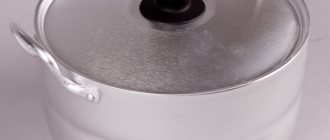Any type of repair is preceded by preliminary preparation.
The degreaser is used when further processing is necessary: metal before painting (for example, a car); enamel before polishing; components before gluing.
This process is often approached with disdain, using formulations that were outdated many years ago. You must understand that, for example, glue when connecting parts will not provide the necessary adhesion if the surfaces are not treated in advance.
Is it possible to degrease with solvent? If you are striving for quality, then the answer is not worth it. In this article we will look at the main problems that arise if the final preparation of products for gluing, painting and polishing is not carried out.
White Spirit
The most common degreaser is white spirit.
It is a transparent liquid with the smell of fuels and lubricants. It was distributed under the trade name "Nefras-S4" of various modifications.
It has gained wide popularity due to its versatility. Please note: working with white spirit without following safety precautions poses a health hazard.
Flammable! Easily neutralizes any oils and fats, many organic compounds. In addition to these purposes, it is used as a thinner for oil paint, enamel, and varnish. Another remarkable quality of white spirit is that after treating the surface, you can immediately apply primer or paint to it. The evaporation of this solvent occurs instantly, as they say “before our eyes.”
It is important to know: you must work in a ventilated area, wearing eye, respiratory and skin protection.
Solvent 646
The next popular degreaser will be solvent 646, which is often used in preparation for painting. The liquid is slightly yellowish in color with a sharp, specific odor.
The spectrum of its action is quite extensive. Excellently dilutes paints, degreases metal surfaces well, is indispensable for removing old layers of paint, and is used for washing painting equipment and tools.
It is recommended to use for thinning the following enamels:
- nitrocellulose NC;
- glypthal GF;
- melaninoamide MPs;
- acrylic;
- epoxy.
When working, it is necessary to maintain the temperature within +5…+30ᵒ C, and air humidity should not exceed 85%. In this case, the painted surface takes on a shiny, glossy appearance without spots or streaks.
Please note: solvent 646 is a fire and explosion hazard! When working, be sure to use respiratory, eye and skin protection! Work only in a ventilated area or with exhaust ventilation.
Usage
Now that it is clear what a solvent is, its use is also worth considering. So, a solvent, the composition of which includes chemically active, even in some sense toxic substances, is used to work (for dilution or dissolution) with acrylic paints, enamel, varnishes, ordinary paints (including those applied in several layers) and flushing fluids).
The described substance is often found on construction sites, because it is used to dilute alkyd, paint and varnish, petroleum-polymer, oil compounds (for example, mastic, bitumen), and solvent adhesive. When diluting paints with solvent, it turns out to make a more viscous substance, that is, to thicken a paint solution that is too liquid.
The solvent will also be useful for those who work with rubber, urea-formaldehyde oligomers, polyesters, and oils. Due to the presence of paraffins, the solvent leaves a glossy film after processing. The substance in question is used to make insect repellents in the home and garden. Despite the fact that this active substance does not have a harmful effect on the crop, after treatment with solvent-containing fertilizers, vegetables or fruits should be washed in plenty of running water.
Solvent is also used for the production of fertilizers Source plodovie.ru
By the way! Solvent adhesive, resistant to acid attack and firmly connecting surfaces, also contains rubber.
Types of degreasers
Many people wonder where the fat on materials comes from. The answer is quite simple. The fact is that the person himself, no matter how strange it may sound, is the source of fatty stains. Touching one or another product, we naturally leave a mark on it.
Also, similar troubles arise after peeling off old applications and tape. However, this is not at all scary, because the Br2 Arikon degreaser is designed to combat precisely this problem.
Depending on which product is the basis for degreasing, special compounds are used. For example, in order to degrease a wooden surface, you need to use a solvent designed specifically for wood. If you need to remove grease from glass, plastic, or metal, use the appropriate solvents:
- So, if you want your metal product to shine and shine like new, you can use anti-silicone. This product works best on metals.
- In order not to spoil a plastic product, especially some automotive part, you need to choose the right solvent. For example, it is better not to use a 3-ton universal degreaser, as the product will bubble and lose color and shape. Deformations are especially scary if the part was an irreplaceable component of one object, so it is better not to joke with plastic products and use special soft compounds (for example, Python). IMPORTANT. If you don’t have the funds to purchase fairly expensive compounds for plastic, don’t worry, because you can take regular alcohol and degrease the surface. In addition, this will also be a plus, since antistatic agents and various sprays (500 ml each) electrify the plastic, and even attract dust, and vodka neutralizes all side effects and allows you to achieve the desired goal in degreasing.
- Any type of solvent is perfect for glass, since this material is not picky and absolutely susceptible.
- To properly clean wood, you need to use not only a degreaser, but also first: sandpaper (and if the case is very advanced, a plane will help). You can also use a spatula to scrape off heavy layers of dirt (if any).
Next, you can take white spirit or acetone and wipe the product. This will improve the adhesive properties of the enamel paint, which will lay on the surface in an even and beautiful layer.
Solvent
Can also be used as a degreaser.
In the retail chain it may go under the name "Nefras F-130/150". Transparent colorless or slightly yellowish liquid. It is made on the basis of petroleum fractions. Less often - coal. When painting a car, it can be used not only as a degreaser, but also as a paint thinner. Excellently removes all auto-preservatives. At the same time, rubber bitumen and oil shale automotive mastics are diluted with a solvent. Solvent-based paints have unique properties. Thanks to their high adhesion, they create a durable coating. When working with solvent, it is necessary to strictly observe safety precautions.
Please note: solvent is toxic and flammable!
Video description
In the following video you can see how parts of the car are washed with solvent:
Contact with skin is not so critical, but in this case you also need to act quickly. After washing, wipe the affected piece of skin dry. It is especially important when working with a solvent solution to ventilate the room in which the work is being done well. If a substance ignites, you must remember that you cannot use water to extinguish the fire; only firefighting foam will do.
General characteristics of the substance
Let's consider the issue of solvent and what it is. In appearance, the substance is a transparent or light yellow liquid; in chemical essence, it is a mixture of hydrocarbons, a volatile substance. It is a product of petroleum and coal refining (petroleum and coal type), is highly flammable and can act as a solvent, thinner, degreaser, and cleaner. May contain impurities of sulfur and phenol (applies to high quality solvent), but the main composition is as follows:
- naphthenes or cycloalkanes (substances found in oil from which aromatic hydrocarbons are obtained);
- paraffins (add flammability to the composition, are a wax-like substance, a mixture of alkanes);
- cyclic hydrocarbons (organic compounds of hydrogen and carbon).
Solvent is obtained by pyrolysis of petroleum fractions or by coking coal.
Chemical formula of the solvent Source patentimages.storage.googleapis.com
See also: Catalog of companies that specialize in paints and varnishes and related work
Purpose and scope of application of degreasers
A degreaser is a special thinner that can be used to prepare the desired surface before it is glued, sanded or painted. Depending on the type of this product, the further selection of the required lubricant depends. For example, in order to remove sealants, polish a product, or clean it of unnecessary glue residues, you need to choose different degreasers.
Basically, degreaser is sold in special tins, similar to paint cans. Each container indicates the manufacturer and instructions for use, which explain in detail how and for what material this particular packaging is best suited.
In order not to make a mistake with your choice, you need to consult with the store manager. Just ask a couple of questions about the manufacturer. This is necessary so that when working with the degreaser, problems do not arise due to failure to meet quality standards.
IMPORTANT. The best brands among such products are considered to be the following producing countries: Germany, Poland, Belarus.
Using a solvent, you can remove grease, oils, lubricants, as well as grinding, polishing and finishing pastes. If it is necessary to assemble any item in metalwork, the craftsmen first degrease each part in order to remove flaws and foreign dust particles do not interfere with the work process.
The anti-silicone assistant copes well with degreasing in a wide variety of human activities: body repairs, car cosmetic repairs (used before painting in order to improve the adhesive properties of the paint and varnish material). The product also cleans different types of surfaces (glass, metal, wood, plastic).
Briefly about the main thing
Solvent is a solvent, degreaser, volatile, chemically active substance produced from petroleum products or coking coal.
Solvent includes paraffins, naphthenes, and cyclic hydrocarbons.
The use of solvent affects a lot of household areas; it is also used in printing, in the chemical industry in the production of shoe polishes, paints, building compounds, fertilizers, and so on.
When working with solvent-containing solutions, you must strictly follow safety precautions to avoid getting a chemical burn.
Acetone
Acetone, as a degreaser, is also widely used.
Colorless transparent liquid with a sharp specific odor. Excellently dissolves oil and grease stains, various resins. Used to thin primers, paints, enamel and varnish. Included in some solvents. It is made on an alcohol basis. Has high volatility.
Expert tip: When working with acetone, use a white rag to avoid causing color streaks on degreased surfaces.
When working with acetone, it is imperative to take measures to protect the skin, eyes and respiratory organs. It is strictly prohibited to use open fire or be near operating electrical appliances. For ease of working with acetone, it is best to use a spray bottle.
Important to know: acetone is flammable!

